Performance evaluation and Classification of Vehicle Restraint Systems (VRS)
From January 1st, 2011 it is mandatory that all vehicle restraint systems installed permanently on the roads of the European Community have the marking. To obtain such Certification, it is necessary to proceed in accordance with the specifications of the harmonized standard UNE EN-1317. This standard classifies and evaluates the performance of the vehicle restraint systems by means of full-scale crash tests.
VRSs must be installed under conditions similar to those applied in the test and complying with the specifications in the Manufacturer’s Installation Manual.
The parameters that determine the qualities of a vehicle restraint system and classify it within the standard EN 1317 are: the containment level, the working width, the dynamic deflection and the impact severity.
• Containment Level: It indicates the capacity of a containment system to withstand the impact load of a vehicle.
Classes and containment levels for road restraint systems
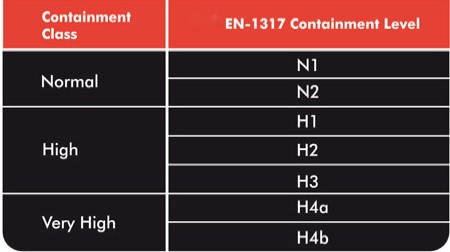
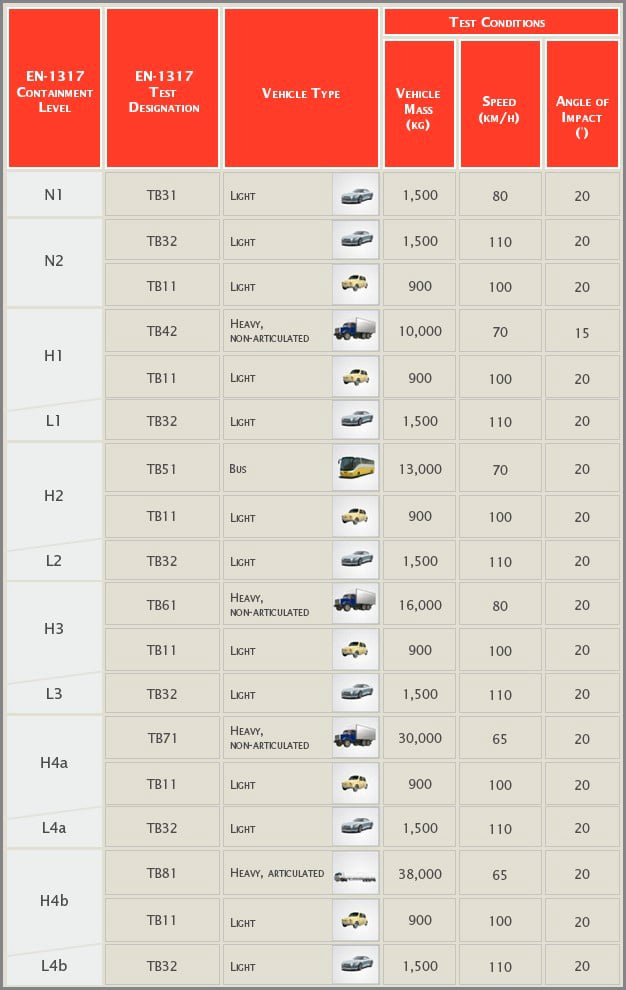
Note: If the systems with “H” containment levels pass the additional TB-32 test, they become “L” containment levels.
• WORKING WIDTH (W): It is the distance between the traffic face of the restraint system before the impact, and the furthest lateral position reached by any essential part of the restraint system and the vehicle.
Working width classes for vehicle restraint systems according to UNE EN-1317
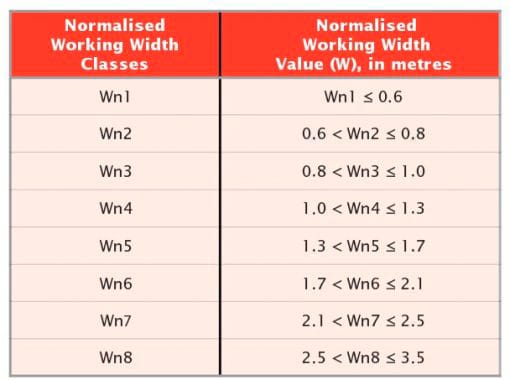
• DYNAMIC DEFLECTION (D): This is the maximum lateral displacement of the traffic face of the restraint system during the impact.
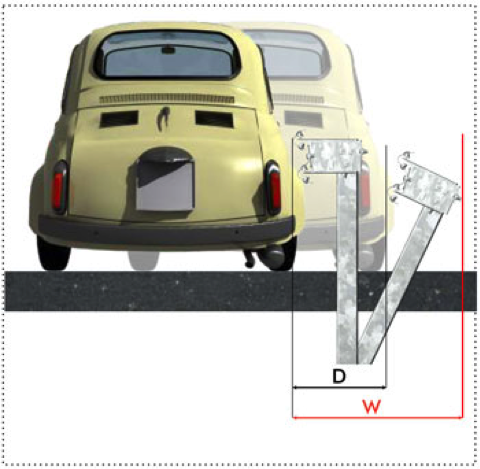
Drawing of working width (W) and dynamic deflection (D)
• Impact severity: It is an index that assesses the damage suffered inside the vehicle in an impact against a restraint system.
| Impact Severity Level | ||
| Level or class | Maximum permissible values | |
| A | ASI ≤ 1.0 | THIV ≤ 33 km/h |
| B | 1.0 ≤ ASI ≤ 1.4 | THIV ≤ 33 km/h |
| C | 1.4 ≤ ASI ≤ 1.9 | THIV ≤ 33 km/h |
ASI: Acceleration Severity Index
THIV: Theoretical Head Impact Velocity
Another concept to take into consideration is the Redirection:
• Redirection: This is the capacity of a restraint system to return a vehicle to the road in a controlled manner after an impact against such restraint system.
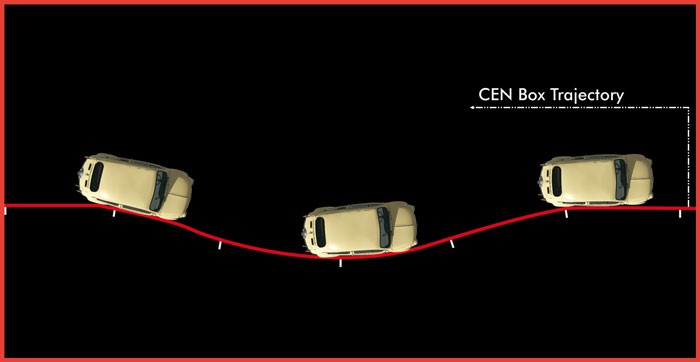
CEN Box: Zone which the vehicle may not leave during its exit trajectory after an impact against a restraint system. The system will be certified only if the test ends with the vehicle inside the CEN box.
Conclusions:
•Containment Level:
We guarantee that the system contains the vehicle (no intrusion, no rollover)
• Impact severity:
We guarantee low decelerations.
• System deformation:
We guarantee that neither the vehicle nor the system will impact against other obstacles, and that the vehicle will not fall down a slope.
• Redirection:
We guarantee that the vehicle will not invade other lanes.



